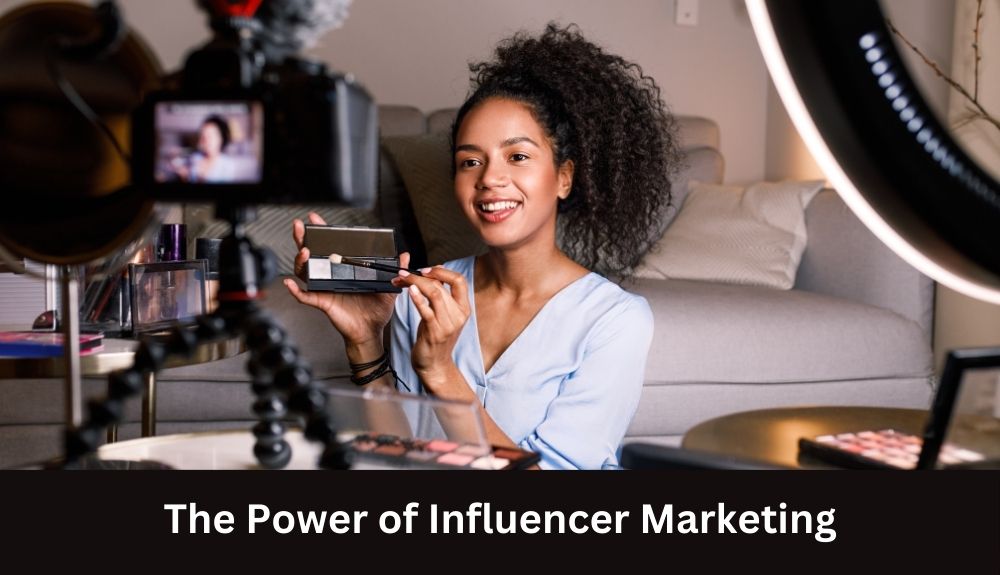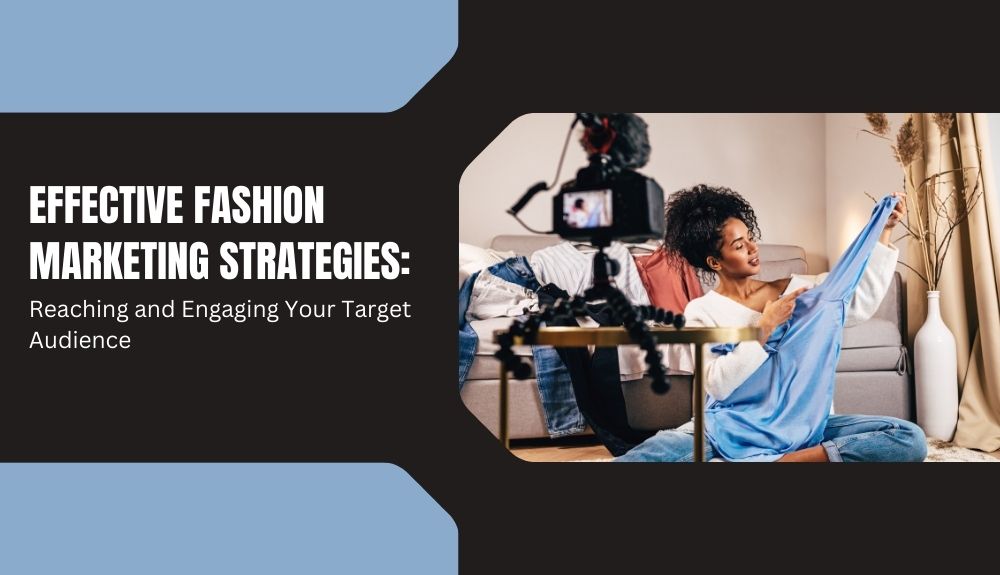Effective Fashion Marketing Strategies: Reaching and Engaging Your Target Audience
Welcome to the exciting world of fashion marketing! In today’s fast-paced and ever-evolving industry, it’s crucial for fashion brands to effectively reach and engage their target audience. With so many competitors vying for attention, it can be a challenge to stand out from the crowd. That’s why we’re here to help you discover effective strategies that will not only capture the hearts of your potential customers but also drive sales and boost brand awareness.
In this blog post, we’ll explore various techniques that successful fashion brands have used to connect with their target audience in meaningful ways. We’ll delve into the importance of understanding your audience, utilizing social media platforms, harnessing the power of influencer marketing, creating engaging content, collaborating with other brands and businesses, as well as measuring success and making necessary adjustments along the way.
So whether you’re a budding fashion entrepreneur or an established brand looking for fresh ideas, get ready to dive into our comprehensive guide on effective fashion marketing strategies. Ready? Let’s get started!
Understanding Your Target Audience
In order to effectively market your fashion brand, it is crucial to have a deep understanding of your target audience. Knowing who they are and what they want will allow you to tailor your marketing strategies specifically for them.
Start by conducting thorough research on demographics such as age, gender, location, and income level. This information will help you create targeted campaigns that resonate with your audience.
But it doesn’t stop there – go beyond demographics and delve into psychographics. Understand their interests, values, lifestyles, and purchasing behaviors. What motivates them? What are their aspirations? By uncovering these insights, you can craft messaging that speaks directly to their desires and needs.
Another important aspect of understanding your target audience is identifying where they spend their time online. Are they active on Instagram or TikTok? Do they read blogs or watch YouTube tutorials? Knowing which platforms they prefer will allow you to allocate resources effectively and engage with them in the right places.
Don’t forget the power of feedback and communication. Actively listen to your customers through surveys or social media interactions. Engage in conversations with them to gain valuable insights that can inform future marketing efforts.
By truly understanding your target audience’s demographics, psychographics, online preferences, and feedback mechanisms – you’ll be able to develop a powerful marketing strategy that resonates deeply with the people who matter most: your customers!
Utilizing Social Media Platforms
Social media has revolutionized the way fashion brands market themselves. With billions of users worldwide, these platforms provide a vast audience to reach and engage with. But how can you effectively utilize social media for your fashion marketing strategy?
It’s crucial to choose the right platforms for your target audience. Instagram is popular among fashion enthusiasts, while Facebook appeals to a broader demographic. Understanding where your audience spends their time will help you focus your efforts.
Once you’ve identified the appropriate platforms, it’s essential to create compelling content that resonates with your followers. High-quality visuals are key in the world of fashion, so invest in professional photography or videography.
Engagement is another vital aspect of utilizing social media effectively. Responding promptly to comments and messages shows that you value customer interaction and fosters brand loyalty.
Collaborating with influencers can also amplify your message on social media. Partnering with individuals who align with your brand aesthetic can expose you to a larger following and increase credibility.
Don’t forget about analytics! Monitoring metrics like engagement rates, follower growth, and website traffic will allow you to measure success and make adjustments as needed.
In conclusion: Social media platforms offer tremendous opportunities for fashion brands to connect with their target audience on a global scale. By choosing the right channels, creating engaging content, fostering strong relationships through engagement strategies like influencer collaborations, and tracking metrics for continuous improvement – brands can leverage the power of social media marketing in reaching their goals successfully.
The Power of Influencer Marketing

Utilizing the power of influencer marketing has become increasingly important in the fashion industry. Influencers have a significant impact on shaping trends and driving purchasing decisions among their followers. By partnering with influencers who align with your brand values, you can effectively reach and engage your target audience.
Influencers have built trust and credibility with their followers, which translates into increased brand awareness and exposure for your fashion business. When an influencer showcases your products or promotes your brand, it creates a sense of authenticity that resonates with their audience.
To maximize the impact of influencer marketing, it’s crucial to carefully select influencers whose style and aesthetic aligns well with your brand image. Look for influencers who have a strong following within your target demographic – those are the individuals who will likely have the most influence over potential customers.
Collaborating with influencers goes beyond simply sending them free products or paying for sponsored posts. It’s about creating genuine partnerships where both parties benefit. Consider co-creating content together or involving influencers in product launches or events to deepen engagement and strengthen connections between your brand and their followers.
Additionally, micro-influencers should not be overlooked as they often have higher engagement rates due to their more niche audiences. While they may not have millions of followers like some macro-influencers do, they can offer valuable access to highly engaged communities that closely align with specific fashion niches.
Remember, successful influencer marketing is about finding authentic voices that resonate with your target audience rather than just chasing follower counts. Take time to research different influencers’ aesthetics, engagement levels, and overall reputation before reaching out for collaboration opportunities.
By leveraging the power of influencer marketing strategically within your fashion marketing strategy plan; you can connect authentically with customers while increasing visibility for your brand in this highly competitive industry.
Creating Engaging Content
In the fast-paced world of fashion marketing, creating engaging content is key to capturing the attention of your target audience. Your content should not only showcase your brand and products but also tell a story that resonates with your customers.
One effective way to create engaging content is by understanding what makes your target audience tick. Research their interests, preferences, and values to tailor your content accordingly. This could involve using vibrant visuals, intriguing headlines, or relatable stories that evoke emotions.
Another important aspect of creating engaging content is staying on top of current trends and industry news. By keeping up with the latest fashion developments, you can incorporate them into your content strategy and demonstrate that you are in tune with what’s happening in the fashion world.
Additionally, don’t be afraid to experiment with different formats for your content. This could include videos showcasing behind-the-scenes footage of photo shoots or interviews with influential figures in the fashion industry. The more varied and dynamic your content is, the more likely it will capture and retain the interest of your audience.
Furthermore, remember to leverage user-generated content (UGC) as part of your strategy. UGC not only helps build authenticity around your brand but also encourages engagement from users who feel valued when their posts are featured by a reputable fashion brand.
Collaborating with Other Brands and Businesses
Collaborating with other brands and businesses can be a highly effective fashion marketing strategy. By joining forces, you not only expand your reach but also gain credibility in the eyes of your target audience.
One way to collaborate is through brand partnerships. This involves teaming up with a complementary brand that shares similar values or target customers. For example, a clothing brand might partner with a shoe company for a joint promotion or event.
Another approach is to engage in cross-promotion. This means promoting each other’s products or services to your respective audiences. You could feature each other on social media, share blog posts or articles, or even create co-branded content.
Influencer collaborations are also becoming increasingly popular in the fashion industry. Connecting with influencers who align with your brand allows you to tap into their engaged following and leverage their influence to promote your products.
Additionally, consider collaborating with local businesses or organizations within your community. This not only strengthens relationships but also helps build trust and loyalty among local consumers.
Remember that successful collaborations require careful planning and clear communication between all parties involved. It’s important to establish shared goals and expectations from the beginning to ensure both brands benefit from the partnership.
Collaborating with other brands and businesses can amplify your reach, enhance credibility, and drive engagement among your target audience – making it an essential strategy for effective fashion marketing.
Measuring Success and Making Adjustments

One of the key aspects of effective fashion marketing is constantly monitoring and measuring your success. This helps you assess the impact of your strategies and make necessary adjustments to optimize results.
It’s crucial to establish clear goals for your fashion marketing campaign. Whether it’s increasing brand awareness, driving website traffic, or boosting sales, having specific objectives will allow you to track progress accurately.
Next, utilize relevant analytics tools to measure various metrics such as website traffic, social media engagement, conversion rates, and customer feedback. These insights provide valuable data that can guide future decision-making.
Regularly analyzing this data allows you to identify trends and patterns in consumer behavior. By understanding what works well and what doesn’t resonate with your target audience, you can refine your marketing efforts accordingly.
Additionally, staying updated on industry trends and competitor analysis is essential for making informed adjustments. Keeping an eye on emerging technologies or new platforms can help you stay ahead in a rapidly evolving market.
Remember that successful fashion marketers are not afraid to experiment and take risks. If a particular strategy isn’t yielding desired results, don’t hesitate to pivot or try something new altogether.
Conclusion
In the fast-paced and ever-evolving world of fashion marketing, it is crucial to have effective strategies that can help you reach and engage your target audience. By understanding who they are, where they spend their time online, and what influences their purchasing decisions, you can tailor your marketing efforts to effectively connect with them.
Utilizing social media platforms is essential in today’s digital age. With the vast number of users on platforms like Instagram, Facebook, and TikTok, these channels provide an opportunity to showcase your brand’s unique style and personality while engaging directly with your audience.
The power of influencer marketing cannot be underestimated. Collaborating with influencers who align with your brand values can lead to increased visibility and credibility among their followers. Their authentic endorsements can go a long way in influencing consumer behavior.
Creating engaging content is key to capturing the attention of your target audience. From captivating visuals to compelling storytelling, make sure every piece of content feels authentic and resonates with your brand identity.
Collaborating with other brands or businesses within the fashion industry can open up new avenues for exposure. By partnering on events or co-creating content, you can tap into each other’s audiences and create a win-win situation for both parties involved.
Measuring success is vital in determining the effectiveness of your marketing strategies. Monitor key metrics such as website traffic, engagement rates on social media posts, conversion rates from campaigns, and customer feedback. Use this data to make informed adjustments that will further enhance your efforts.
In conclusion, To succeed in fashion marketing requires a deep understanding of one’s target audience coupled with strategic utilization of various channels such as social media platforms and influencer partnerships. By creating engaging content that resonates with consumers’ desires while collaborating strategically within the industry, fashion brands can better position themselves for growth.











